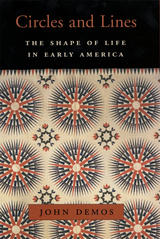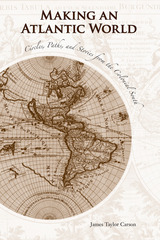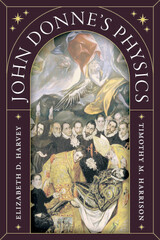
In this intimate, engaging book, John Demos offers an illuminating portrait of how colonial Americans, from the first settlers to the postrevolutionary generation, viewed their life experiences. He also offers an invaluable inside look into the craft of a master social historian as he unearths--in sometimes unexpected places--fragments of evidence that help us probe the interior lives of people from the faraway past.
The earliest settlers lived in a traditional world of natural cycles that shaped their behavior: day and night; seasonal rhythms; the lunar cycle; the life cycle itself. Indeed, so basic were these elements that "almost no one felt a need to comment on them." Yet he finds cyclical patterns--in the seasonal foods they ate, in the spike in marriages following the autumn harvest. Witchcraft cases reveal the different emotional reactions to day versus night, as accidental mishaps in the light become fearful nighttime mysteries. During the transitional world of the American Revolution, people began to see their society in newer terms but seemed unable or unwilling to come to terms with that novelty. Americans became new, Demos points out, before they fully understood what it meant. Their cyclical frame of reference was coming unmoored, giving way to a linear world view in early nineteenth-century America that is neatly captured by Kentucky doctor Daniel Drake's description of the chronography of his life.
In his meditation on these three worlds, Demos brilliantly demonstrates how large historical forces are reflected in individual lives. With the imaginative insights and personable touch that we have come to expect from this fine chronicler of the human condition, Circles and Lines is vintage John Demos.

The vibrant merchant culture of Tokugawa Japan gave rise to many new forms of art, none more fascinating than the puppet theater, Jōruri, created chiefly by Chikamatsu Monzaemon, the foremost playwright of popular Japanese drama. In this analysis of Chikamatsu's artistry, Dr. Gerstle focuses on features hitherto neglected by Western scholars the musical structure of Jōruri, integral to the form, mood, and movement of the drama. For extensive translations from the various types of Chikamatsu's dramas, Gerstle supplies the musical notations, which illuminate the sophisticated conventions of this unique and timeless artistic form.
Chikamatsu's art, combining puppets, text, samisen music, and chanting/narration, encompasses three major types of drama--history, contemporary-life, and love-suicide plays--each with distinct structural features. Gerstle shows how the music of Jōruri, a mixture of the samisen and chanting/narration, supplements the texts and expresses a dramatized action or emotion through complex changes in pitch, tempo, and style of delivery.
Richly illustrated with woodblock prints, this is a fascinating study, which will be welcomed by scholars of Japanese culture, literature, and musicology.

Based on the notion of “founding peoples” rather than “founding fathers,” Making an Atlantic World uses an innovative, interdisciplinary approach to interpret the Colonial South. James Taylor Carson uses historical ethnogeography-a new methodology that brings together the study of history, anthropology, and geography. This method seeks to incorporate concepts of space and landscape with social perspectives to give students and scholars a better understanding of the forces that shaped the development of a synthesized southern culture.
Unlike previous studies, which considered colonization as a contest over land but rarely considered what the land was and how people understood their relationships to it, Making an Atlantic World shows how the founding peoples perceived their world before contact and how they responded to contact and colonization.
The author contends that each of the three groups involved-the first people, the invading people, and the enslaved people-possessed a particular worldview that they had to adapt to each other to face the challenges brought about by contact.
READERS
Browse our collection.
PUBLISHERS
See BiblioVault's publisher services.
STUDENT SERVICES
Files for college accessibility offices.
UChicago Accessibility Resources
home | accessibility | search | about | contact us
BiblioVault ® 2001 - 2024
The University of Chicago Press









